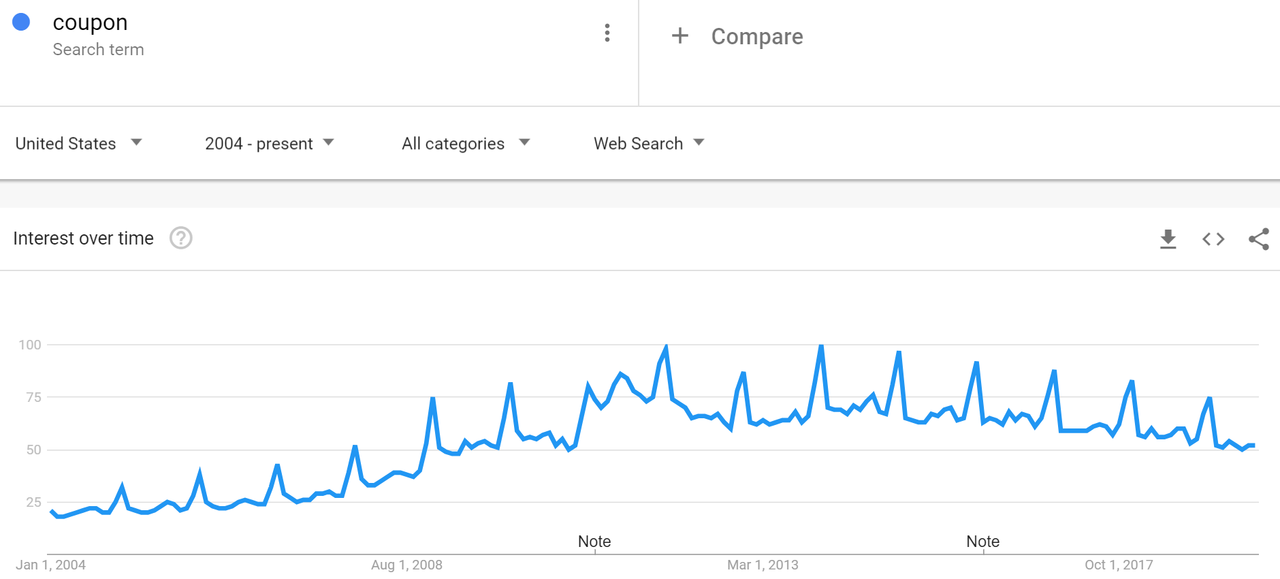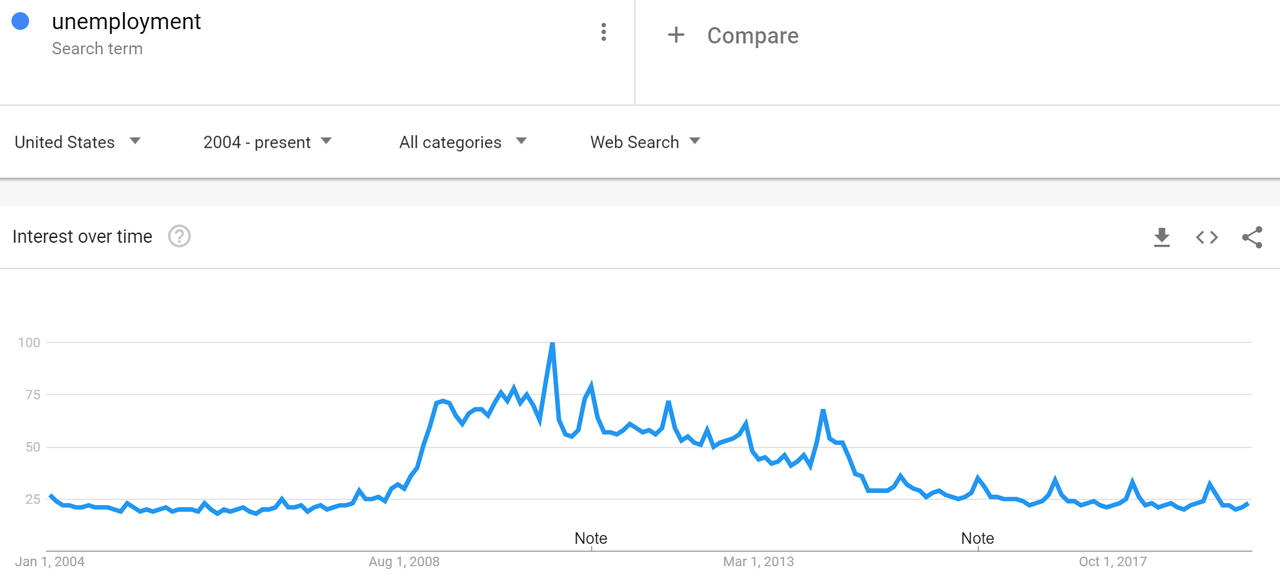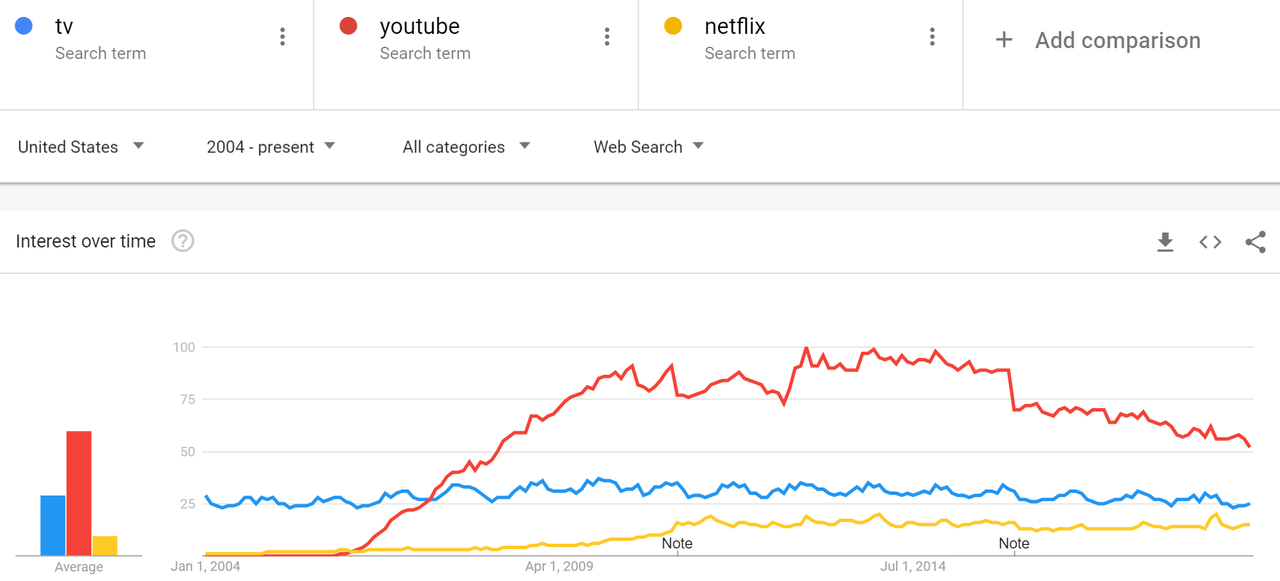Submitted by Nick Colas of DataTrek
Today we add domestic Google search volumes to our ever-growing list of US recession indicators and find that the US economy still looks pretty solid. Searches for “coupon” continue to decline (and feed the Fed’s concern about subpar inflation). Queries for “unemployment”, which led actual joblessness in 2007, are flat/down. Searches for media (TV, YouTube and Netflix), which also led traditional economic indicators in 2007 (because fewer overtime hours means more media consumption), are declining.
We have had a great response to our “Recession Predictors” reviews over the last 2 weeks, showing this is a top-of-mind topic for many of you. Once we log a few more we will do a reprise of what they collectively have to say.
Today we continue the theme with a look at the volume of specific Google search terms that were leading indicators of the Great Recession. Since Google was much less ubiquitous pre-early 2000s, we really only have 2 economic cycles of data to consider. Google Trends itself only presents data from 2004 to the present.
Here are relevant 3 search terms we found with charts of the Google Trend US data for each:
#1: “Coupon”. Our rationale for thinking this is a leading indicator is that US consumers will start looking for product/service discounts as economic uncertainty increases. Deferring or eliminating purchases – what traditional indicators measure – comes later, once unemployment is actually rising.
- Search volumes here rose by 18% in 2005 and 10% in 2006, before really taking off by 23% in 2007 and 45% in 2008. “Peak coupon” was in 2011, 200% above 2005.
- Now, US Google searches for “coupon” have been in decline since 2012 and June 2019 query volumes were 7% lower than last year’s equivalent period.
#2: “Unemployment”. People search for this term when they fear a layoff is imminent, allowing Google Trends to act as a useful leading indicator. Both the weekly initial claims data and the monthly Jobs report only capture employment trends after layoffs start.
- Even though the BLS data says US unemployment troughed in 2H 2006 – 1H 2007, Google searches for the term started increasing in January 2007 (+5% year over year). Every month after showed a 3-5% increase in “unemployment” searches versus the prior year.
- Today there is no change in Google search volumes for “unemployment”. June 2019 is flat to last year’s comparable month, and April/May are also the same or slightly lower than 2018.
#3: “TV” and other media sources “YouTube” and “Netflix”. When overtime hours get cut back, workers have more time to consume media. In 2007 that would have meant Googling for “TV” shows. Now we must include other sources of home entertainment like “youtube” and “netflix” in our analysis.
- Searches for “tv” started increasing early in 2H 2007 (+15% for September), long before the typical Holiday peak from searches for “buy a TV”. “Peak TV” was in December 2009 and US Google searches here have been in decline ever since.
- Comparing “tv” to “youtube” and “netflix” searches now finds that all three are flat or declining. While there are likely some secular reasons for this – most notably users engaged on mobile platforms with no need for a Google query bar – we still believe that once unemployment starts to increase media-related search volumes will follow suit. Veteran readers will recall this happened pre-Internet with cable television viewership.
Summing up: if the Federal Reserve looked at Google Trends they might not be so inclined to cut rates next week. OK – maybe declining “coupon” searches does feed their concern about subpar inflation, and that’s fair enough. But taken as a whole these 3 indicators give us little cause for concern just now.
via ZeroHedge News https://ift.tt/2LD0XP3 Tyler Durden


